The sports camera hits the ceiling, can DJI "break the wind"?
![]() 07/18 2024
07/18 2024
![]() 614
614
The sports camera market is waiting for DJI's big move.
Ten years ago, no one would have imagined that today a camera capable of recording 4K high frame rate videos, taking photos, being waterproof, dustproof, resistant to low and high temperatures, and possessing excellent image stabilization could be "condensed" into just 145g. This is precisely the incredibly popular new category in the domestic market today – sports cameras.
As the dominant player in the drone industry, DJI actually ventured into the sports camera market as early as 2019 with the launch of the Osmo Action. However, due to the early dominance of GoPro in the sports camera market, DJI's sports camera did not make much of a splash at the time.
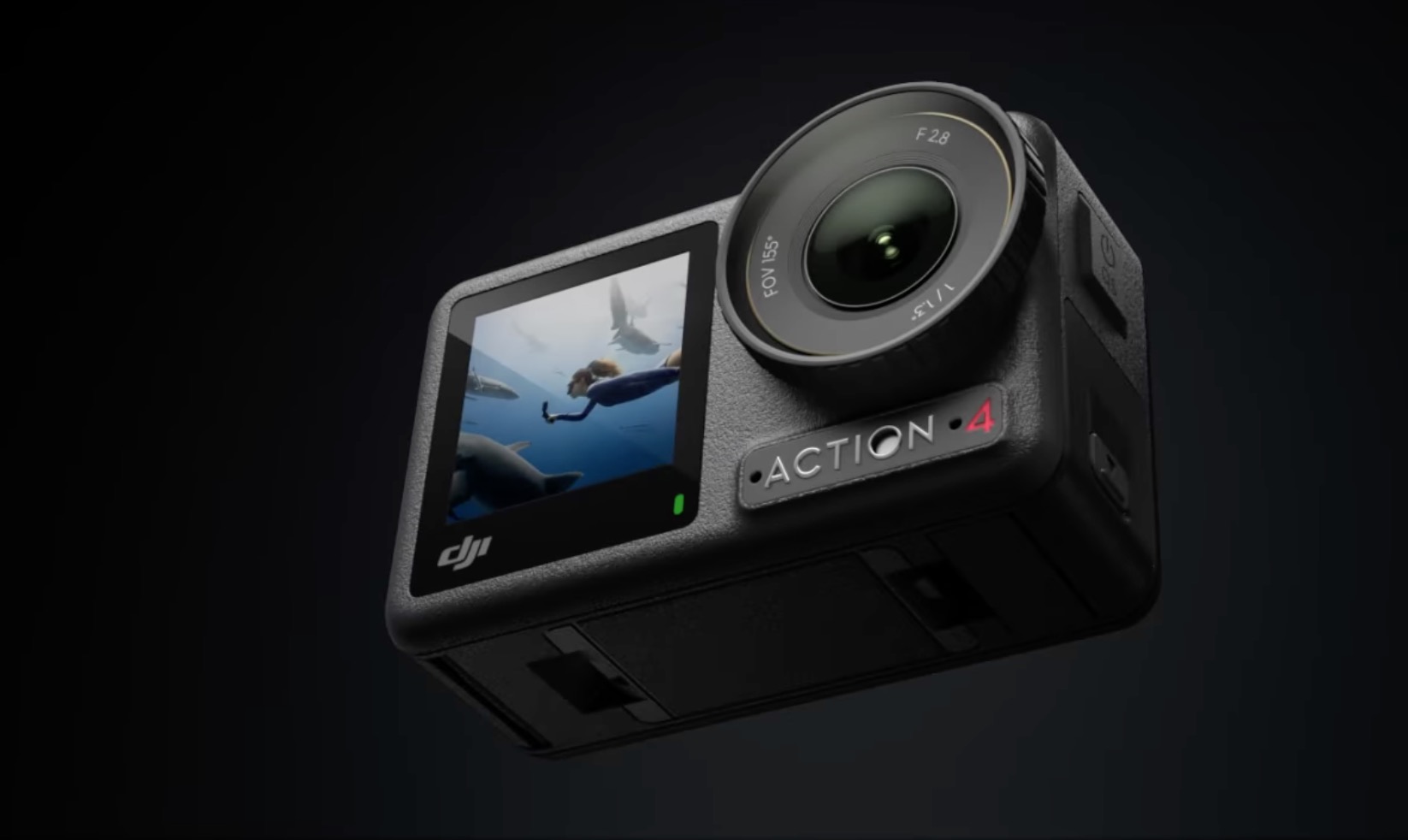
(Image source: DJI official)
But with continuous upgrades and iterations in DJI's sports camera technology, coupled with GoPro's lack of progress, subsequent models like the Action 3 and Action 4 have achieved impressive sales and reputation. Relevant data shows that DJI's market share in the sports camera market has reached 40%, making it the current top player in sports cameras.
Recently, according to relevant leaks, the DJI Action 5 Pro is on its way, which is the first product in the DJI Action series to bear the Pro suffix, potentially bringing surprises in terms of functionality and configuration.
Action 5 Pro, a new benchmark for sports cameras?
Based on spy shots released by blogger @OsitaLV, the Action 5 Pro is almost identical in appearance to the Action 4/3, with the only difference being that the gold decorative ring around the lens has been changed to red, perhaps as a distinguishing mark between the Pro version and the regular version.
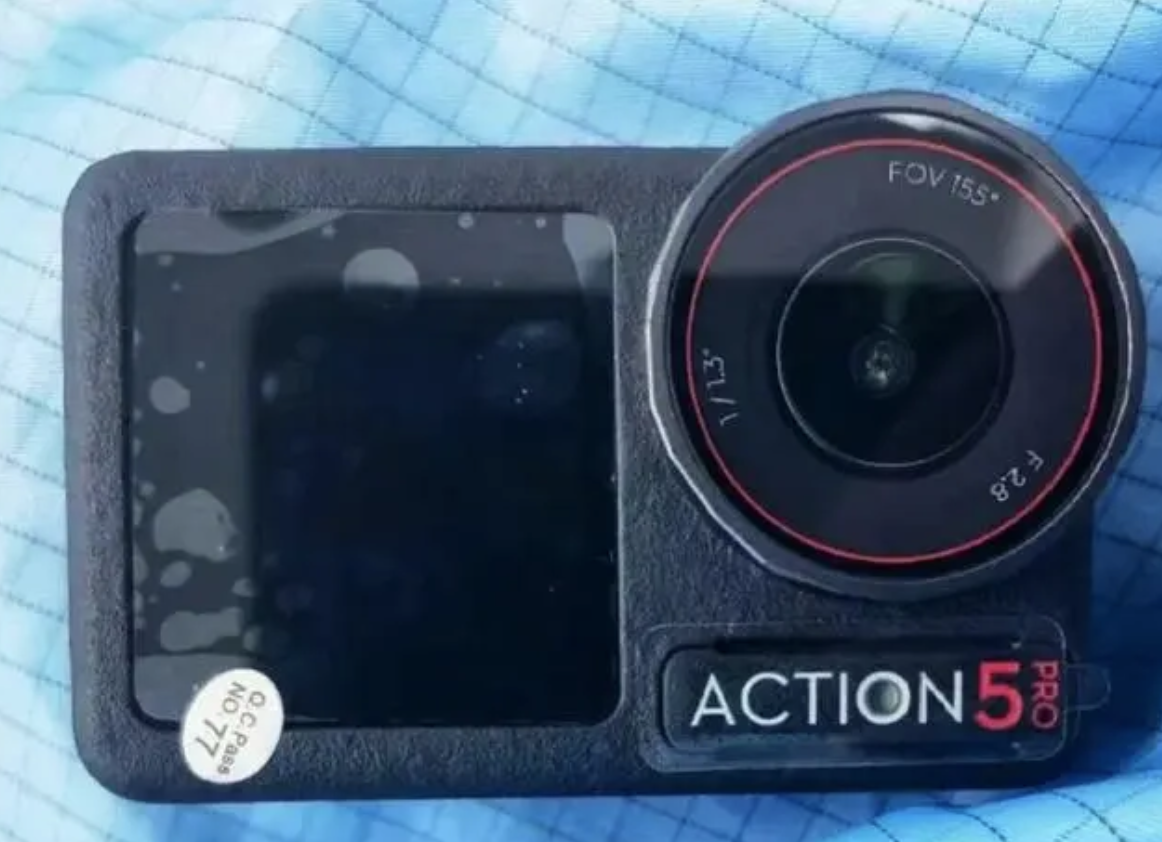
(Image source: blogger @OsitaLV)
The spy shots also reveal that the Action 5 Pro is equipped with a 155° field of view, maximum aperture of F2.8, and a 1/1.33-inch camera sensor. As an avid DJI fan, I immediately recognized these as the sensor parameters of the Action 4. How come in the new Pro version, the most important camera sensor hasn't been upgraded at all?
Moreover, DJI's Pocket line, another product line, has already adopted the Sony IMX989 sensor for its latest generation products. Those familiar with smartphones are no strangers to this name. Yes, it is the major contributor to ushering in the era of one-inch sensors in mobile photography, used in flagship cameras like the Xiaomi 12S Ultra, OPPO Find X6 Pro, and vivo X90 Pro+. Its capabilities and actual performance are well-known.
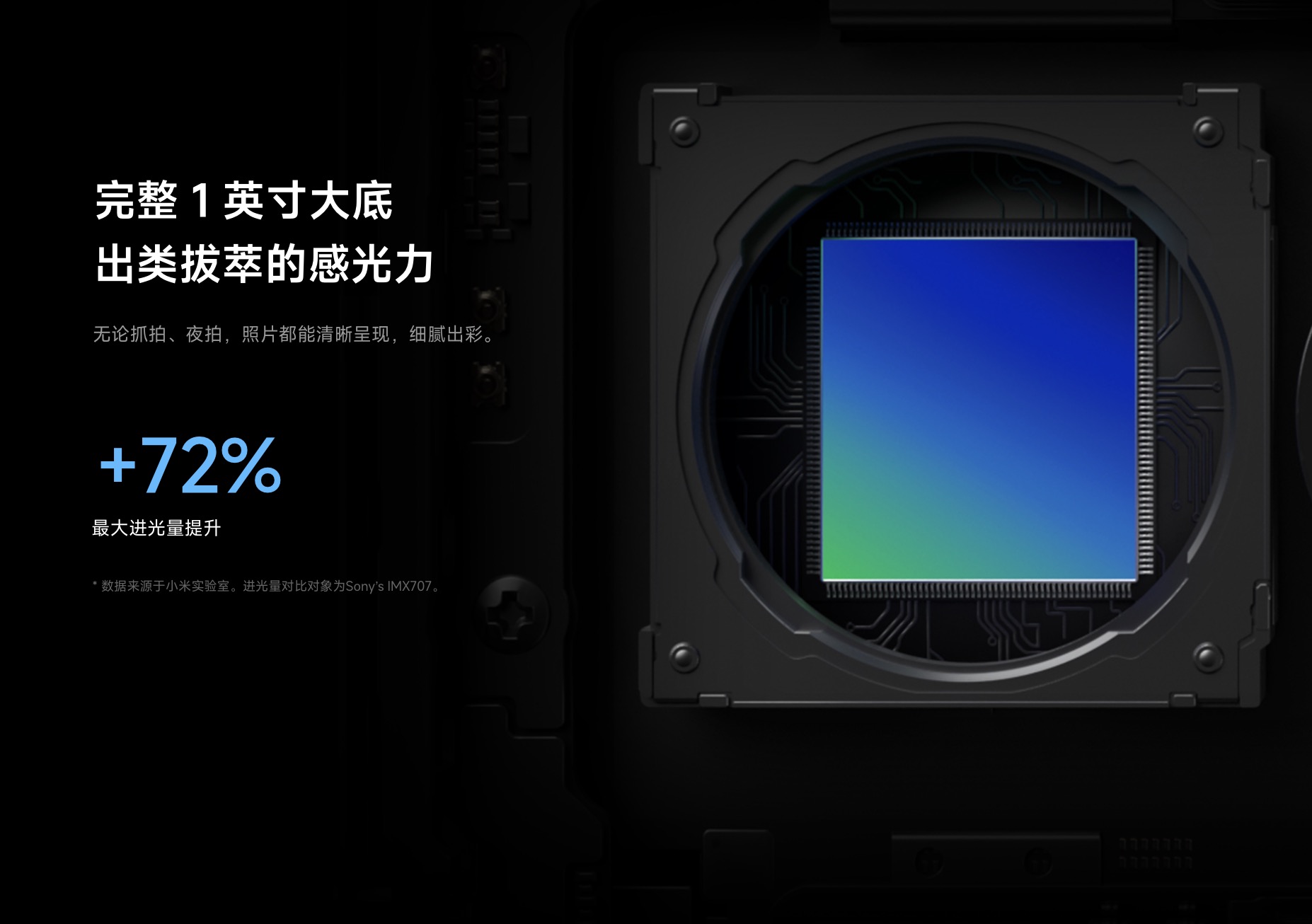
(Image source: Xiaomi official)
However, upon closer inspection, it becomes understandable. While the Sony IMX989 sensor offers significant improvements in image quality and resolution, it also brings significant power consumption and heat generation. For sports cameras, which are inherently small in size and have limited heat dissipation areas, forcibly incorporating a larger sensor would lead to significantly increased heat generation, increasing the probability of system crashes during long recording sessions.
Furthermore, the IMX989 sensor would inevitably lead to higher manufacturing costs. Taking DJI's own Pocket 3 as an example, although its form factor and positioning differ from the Action 4, there is a price difference of 901 yuan between the two, which is difficult not to associate with differences in camera sensor costs. It's worth noting that the Action series has relied on affordable pricing to effectively compete with GoPro. If the pricing of the Action 5 Pro increases significantly, its sales and reputation may both suffer.

(Image source: DJI official)
As for whether the Action 5 Pro will introduce various new video features such as 6K resolution, higher frame rates, and higher slow-motion recording capabilities, I believe the possibility is quite high. After all, if there are no upgrades in the sensor department, there must be improvements in functionality and algorithms. Otherwise, how could DJI dare to name it Pro?
In addition, foreign media reports suggest that the battery capacity of the Action 5 Pro will be increased from 1770mAh to 1950mAh, which theoretically should lead to improved battery life. However, considering that the Action 5 Pro is likely to introduce some new image quality options and features, its specific performance will have to wait until the actual product is released.
Lastly, regarding the price, which is of utmost concern to everyone, considering that the current sports cameras are priced between 2200-2500 yuan, the Action 5 Pro's price should be within 3000 yuan. However, how many selling points it can offer to attract consumers will have to wait for subsequent leaks.
How can sports cameras continue to innovate?
Unlike professional cameras, the target audience for sports cameras does not prioritize image quality. After all, limited by size, weight, and price, sports cameras cannot compare to large and heavy professional mirrorless cameras. Moreover, 4K resolution video specifications already meet the needs of more than 95% of users.
Taking myself as an example, aside from occasionally experimenting with how clear and power-consuming 4K resolution is, the rest of the time, I keep my DJI Action 4's image quality and frame rate settings fixed at 1080P/30fps. For commonly used social platforms like WeChat, QQ, and Xiaohongshu, this specification is more than sufficient.
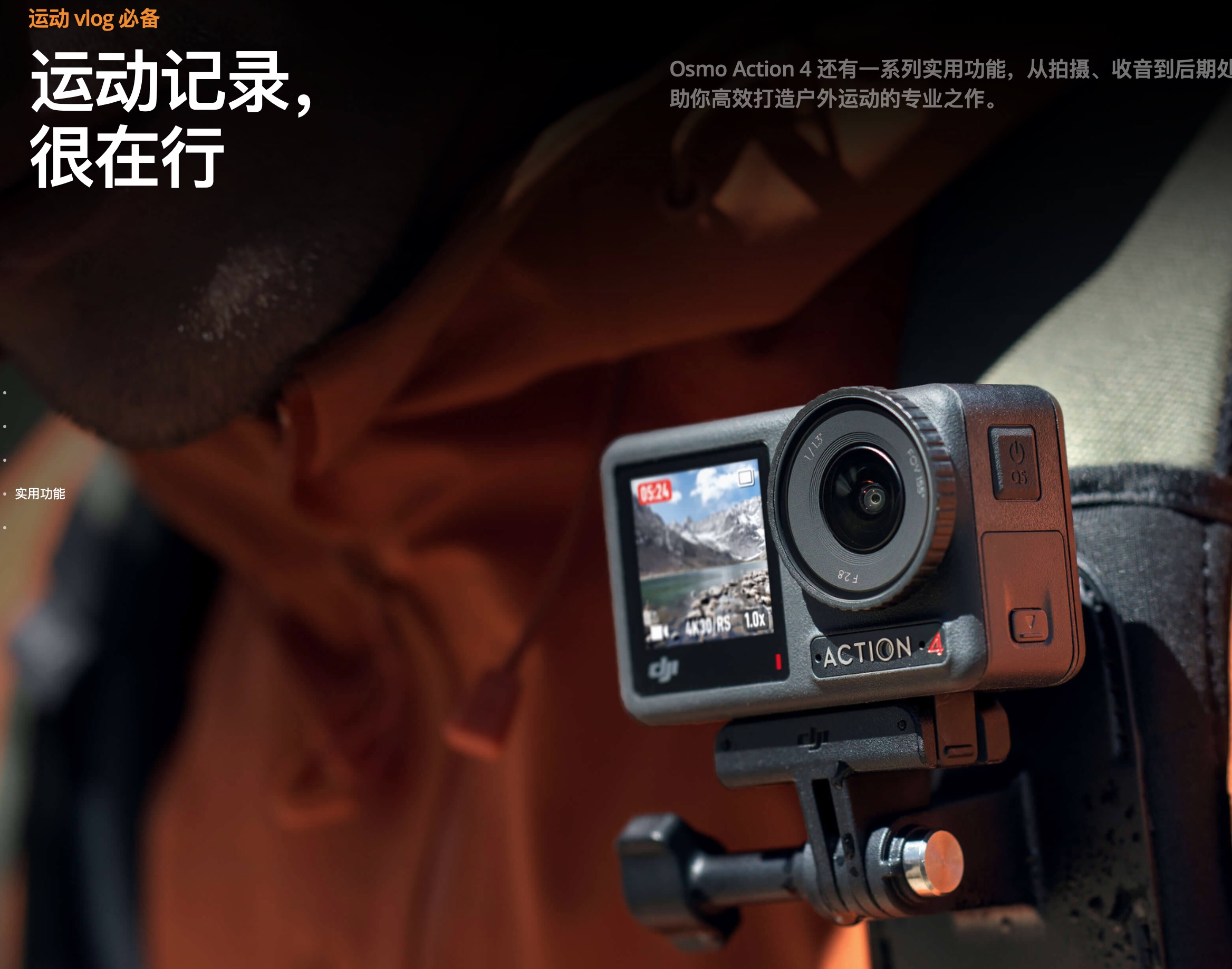
(Image source: DJI official)
As a clearly targeted product category, sports cameras excel in specific scenarios where they are most suitable. They strive to streamline unnecessary functions, reduce size and weight, and focus on a single aspect. Rather than creating a jack-of-all-trades model, consumers prefer a product with a sufficiently "long" strength.
However, in my opinion, the sports camera market has long entered a technical bottleneck. In terms of image quality, last year's Action 3 is still competitive today, and many sports cameras have somewhat redundant functions. This situation reminds me of the current smartphone market, where hardware competition has reached its limits, and users are experiencing fatigue from upgrading their devices.
But the smartphone market has come up with another interesting point in recent years: foldable phones, whose unique form factor has attracted many users. So, what about sports cameras? Can they learn something from the smartphone market and change the product form factor?
Actually, it's feasible. For example, DJI's early Action 2 was a very bold attempt. Its form factor differs from GoPro's. It's more like a separate component that can achieve different functions by connecting to different expansion modules, offering plenty of playfulness and creativity.
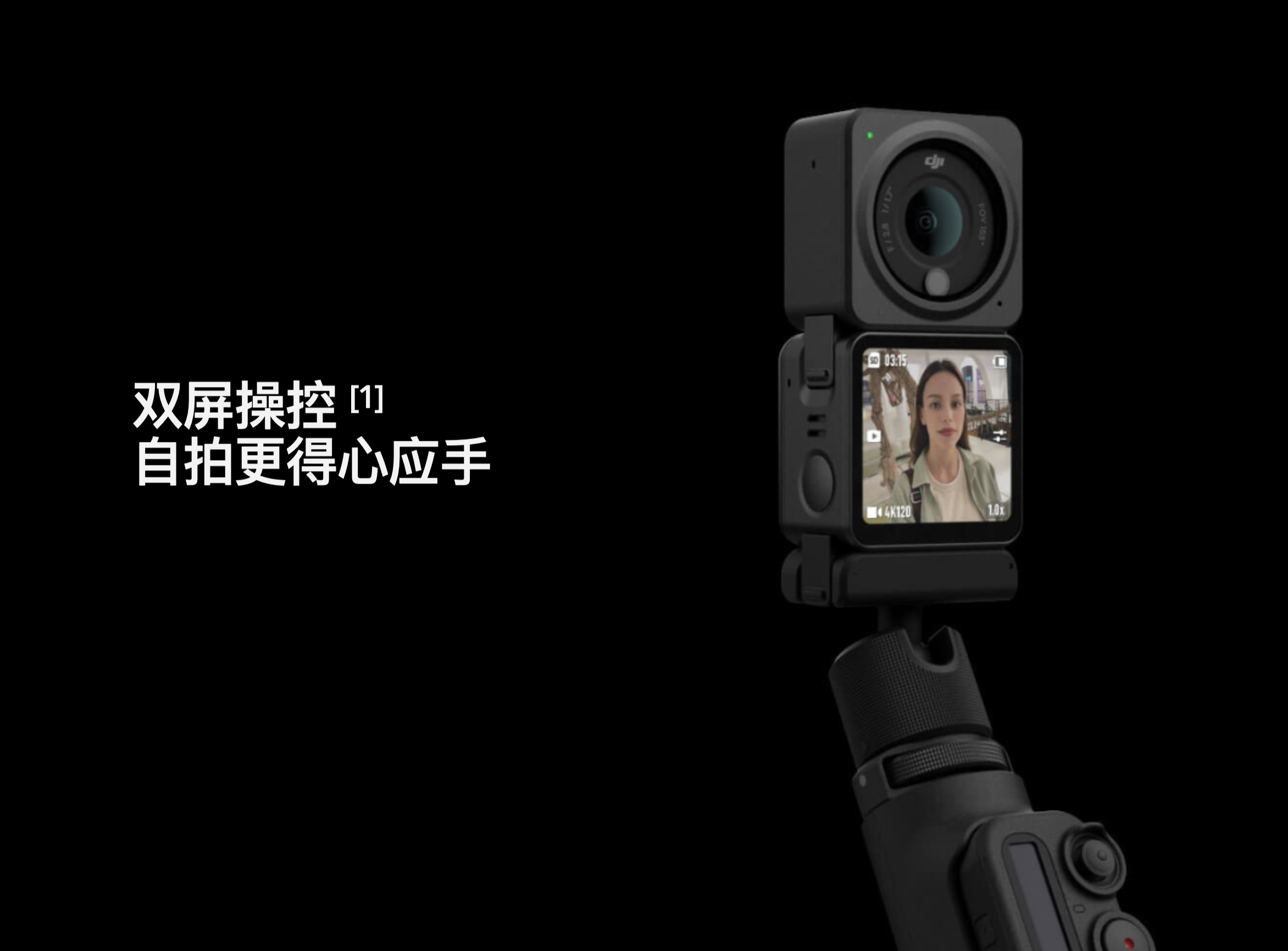
(Image source: DJI official)
However, limited by DJI's early technology, the Action 2's performance in heat dissipation and battery life was mediocre, which explains why the subsequent Action 3 reverted to a conventional design. Now, with technological maturity, manufacturers may consider revisiting this somewhat "retro" yet "innovative" design.

(Image source: DJI official)
Another issue is that sports camera apps are still not mature enough. Based on my experience with DJI's Action 4 and Insta360's X3, the app experience can only be described as average. In particular, the process of transferring videos from the camera to the phone, limited by network bandwidth, often takes half a minute or longer to export a one-minute video. During this time, you cannot exit the app interface or the connection between the phone and camera will be disconnected, requiring you to start over.
Even more confusing is that the Action 4's transmission interface only supports USB 2.0 protocol, meaning that transferring files via a data cable is even slower than using the app. For those who need to record a large amount of footage, exporting videos is a particularly painful process.
Therefore, in addition to improving the app's operation logic and transfer speed, sports cameras can also consider replacing the current mainstream Micro SD card slot with an SD card slot, allowing users to directly use high-speed card readers to export footage.
Lastly, there are technical challenges. Due to their size constraints, sports cameras cannot be equipped with more professional mechanical shutters like mirrorless cameras. Electronic shutters, which use frame-by-frame exposure during shooting, can cause noticeable jelly effects (distortion or tilting of objects in the image) when capturing high-speed or slow-motion scenes, affecting the quality of the footage.
The solutions would involve using faster-reading CMOS sensors or equipping them with larger global shutters, but both methods would increase manufacturing costs. How to address this issue is up to the manufacturers.
Final Thoughts
Sports cameras have always been a niche product category. For the vast majority of users, they are more of a gimmick and hardly qualify as a true camera.
However, for the entire camera market, the existence of sports cameras greatly enriches the application scenarios of cameras. Today, we can attach sports cameras to helmets, cars, or even drones, offering unique perspectives that traditional cameras simply cannot match.
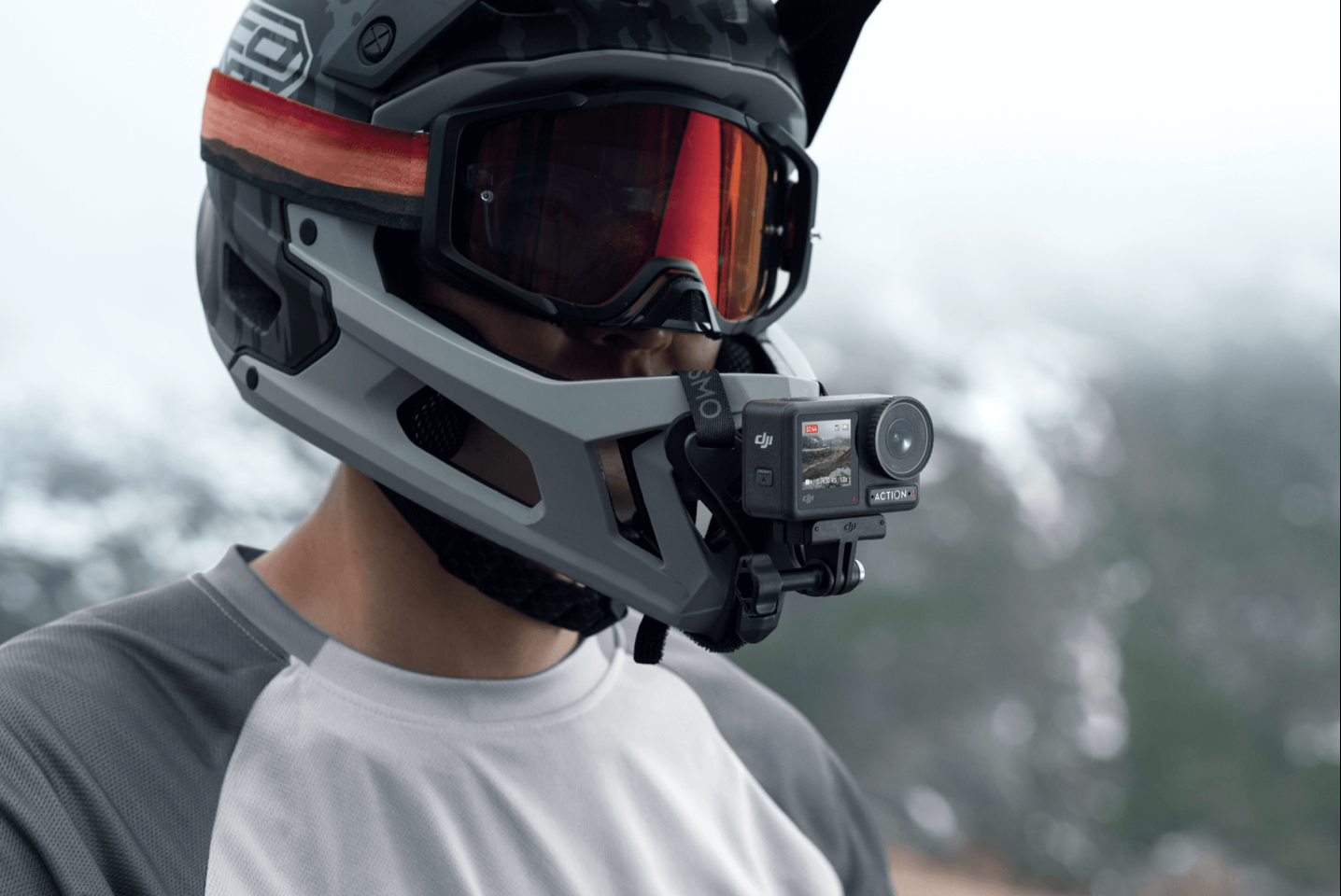
(Image source: DJI official)
As the hottest sports camera brand in recent years, whether DJI can bring us more creative and meaningful products in the future depends on whether its R&D team can come up with new ideas.
Source: Lei Technology








